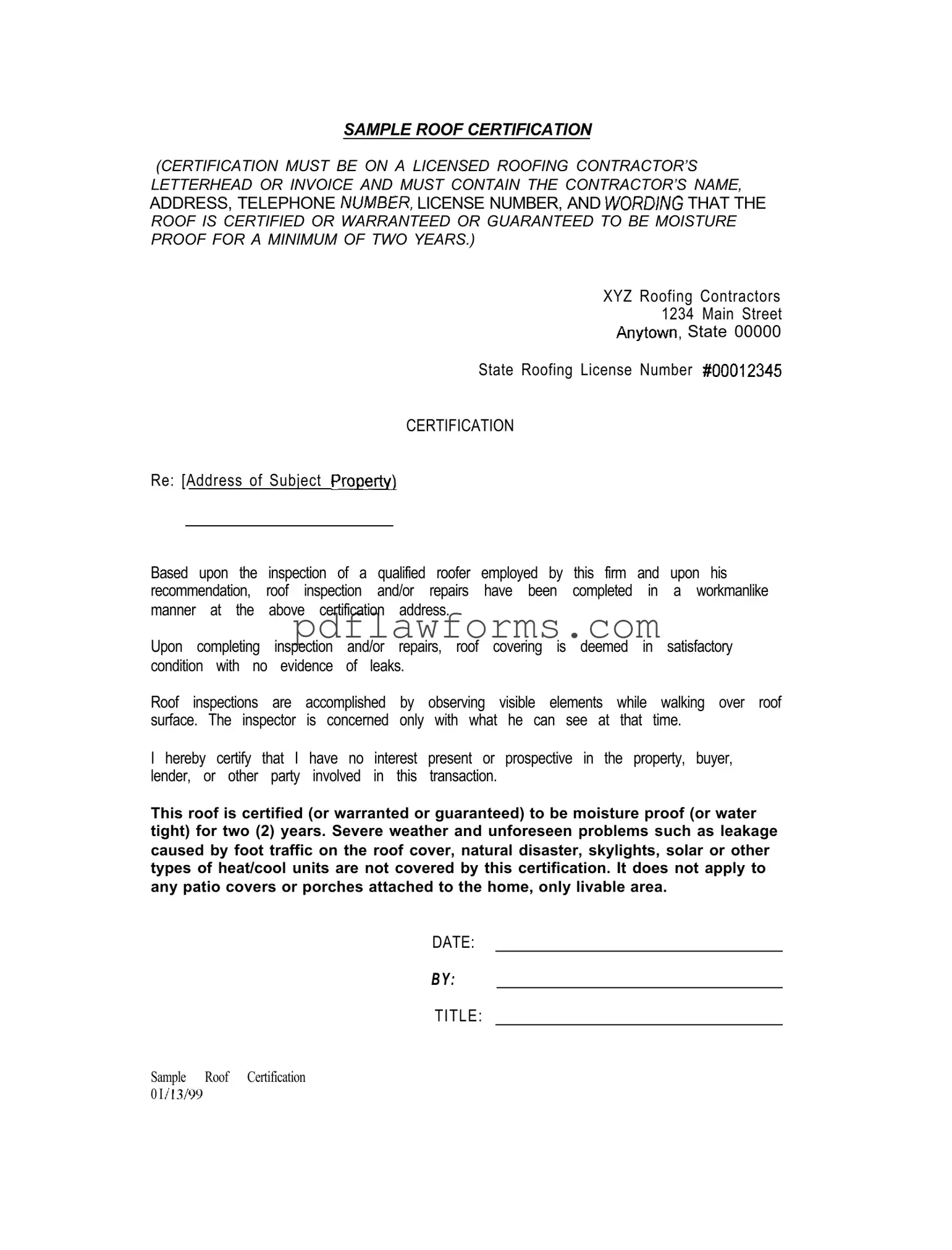Filling out the Sample Roof Certification form is a crucial step in ensuring that a roof is certified as moisture-proof for a minimum of two years. However, mistakes can easily occur during this process. One common error is failing to use the proper letterhead. The certification must be on a licensed roofing contractor’s letterhead or invoice. Without this, the certification may not hold any legal weight.
Another frequent mistake involves omitting essential contact information. The contractor’s name, address, telephone number, and license number must all be included. If any of this information is missing, it can lead to confusion and potentially invalidate the certification.
People often forget to specify the address of the property being certified. This detail is critical; without it, there is no clear indication of which property the certification pertains to. Leaving this blank can lead to disputes or misunderstandings later on.
In addition, individuals sometimes misinterpret the wording of the certification. The form must clearly state that the roof is certified, warranted, or guaranteed to be moisture-proof. If the language used is vague or incorrect, it may not provide the necessary assurance to the homeowner or any parties involved in the transaction.
Another mistake is neglecting to mention the limitations of the certification. It is vital to include that severe weather and unforeseen issues, such as damage caused by foot traffic or natural disasters, are not covered. Failing to clarify these limitations can lead to unrealistic expectations about the roof’s performance.
Lastly, the date and the signature of the contractor must be present. Without these, the certification lacks authenticity. A missing signature can render the entire document ineffective, leaving homeowners without the protection they thought they had.
